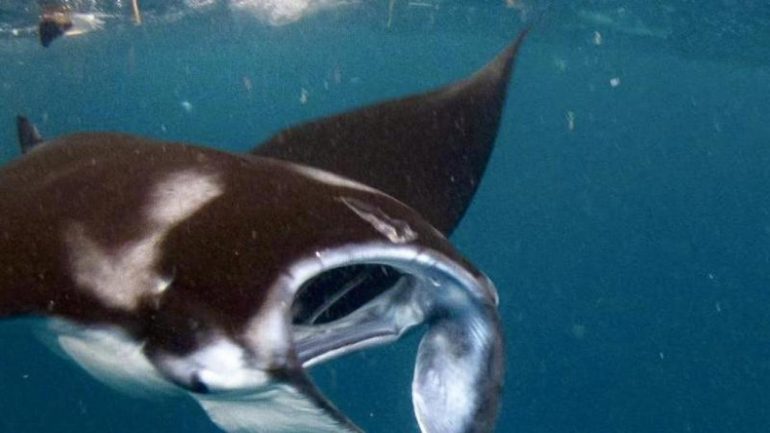atmosphere
Endangered manta rays in particular are suffering from pollution of Indonesian waters from plastic waste. They think that the particles are nutritious plankton.
A manta beam floats between pieces of plastic.
Photo: Marine Megafauna Foundation / DPA
Bali (dpa). According to the researchers, a cheap visual analysis can be used to determine the composition of plastic particles obtained by manta rays.
This allows for conclusions about the sources, the team reports in the specialist journal “Marine Pollution Bulletin”. This in turn can help reduce penetration, particularly in the ocean.
Researchers led by Janis Argeshwara from Udana University in Denpasar (Bali / Indonesia) extracted plastic parts from surface waters of Manta Bay, Nusa Penida, for their analysis. There are several reef manta rays (Mobula alfredi) in the area, which are popular among tourists. “To understand the potential damage that plastic parts can cause, we have to know what they are doing, especially the small pieces and microplastics,” explained Argeswar.
Manta rays live in coastal waters, often polluted with plastic waste. Large, highly endangered animals feed on microorganisms such as plankton and small crustaceans. They also filter plastic parts with water and swallow them. According to the researchers, fish mistake plastic particles for plankton mainly because of their color.
The team assigned pieces of plastic from Manta Bay up to 30 millimeters in size to different groups according to color and composition. In what is known as Fourier transform Raman spectroscopy (FTIR), they confirmed that the visual classification of most particles allows to draw largely correct conclusions about the chemical structure.
According to the researchers, most of the particles examined were fragments of large objects. Mostly they were transparent, white, blue or green. These are colors that are similar to plankton and other natural prey of manta rays and other fish. According to the analysis, the particles mostly consisted of polyethylene or polypropylene, rarely higher than polystyrene (styrofoam) or polyester.
Plastics such as polyethylene and polypropylene are rarely toxic themselves, but the particles may contain pollutants and are also colonized by potentially dangerous microbes, the researchers explained. A lot of packaging material and household items can be detected in Indonesian waters of plastic pollution. Better waste management is also needed, as there is a decrease in the amount of single-use plastics and packaging materials.
© dpa-infocom, dpa: 210514-99-595812 / 2

Web guru. Amateur thinker. Unapologetic problem solver. Zombie expert. Hipster-friendly travel geek. Social mediaholic.





